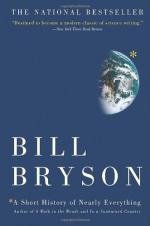|
This section contains 529 words (approx. 2 pages at 400 words per page) |

|
Part 5, Chapter 26 Summary and Analysis
If someone is married to a person from their own race and country, there is an overwhelming probability that the two of them are distant relatives. In fact, if one looks around a movie theater or park, there is an excellent chance that they are related to most of the people that they see. In a literal sense, all humans are one family.
Human genetic heritage is amazingly similar. Over 99.9 percent of a person's genes are shared with all other humans. The remaining one gene in 1,000 makes each human a unique individual. Each cell contains a nucleus. Inside the human nucleus are 46 chromosomes, 23 from each parent. The chromosomes are made up of DNA strands that contain genes. There is six feet of DNA in each cell of the body, approximately 20 million kilometers in total. The DNA contains 3.2 billion letters...
(read more from the Part 5, Chapter 26 Summary)
|
This section contains 529 words (approx. 2 pages at 400 words per page) |

|




